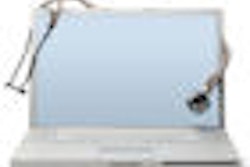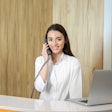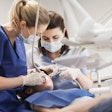
The highly anticipated rollout of the U.S. Military Health System's (MHS) first integrated electronic medical and dental record has hit a snag.
Deployment of AHLTA Dental, the dental component of the military's electronic health record known as AHLTA (Armed Forces Health Longitudinal Technology Application), is undergoing a "strategic pause" to enable the MHS to "further analyze some existing functions within other systems," according to Charles Campbell, MHS Chief Information Officer.
"MHS is initiating a pause to do a pulse check of where we are with the process and make modifications based on the needs of our healthcare providers," Campbell said. "We need to make sure we can keep pace with the dental community's evolving needs, so I would rather take time to examine those needs and make adjustments now rather than replacing the system later."
“We need to make sure we can keep pace with the dental community's evolving needs.”
— Charles Campbell, Chief Information
Officer, U.S. Military Health System
The AHLTA electronic health record is designed to integrate all dental and medical information in the MHS Clinical Data Repository, which maintains records on more than nine million active-duty and retired military personnel and their families.
MHS launched the dental module of AHLTA in March of this year. MHS had originally planned to deploy AHLTA Dental to nearly 400 Army, Air Force, and Navy dental clinics worldwide by the end of 2010, with the Army scheduled to begin rolling it out to 18 clinics this month. But on November 3, news reports indicated that the Army was pulling out of the deployment, opting to use its own dental record application instead.
In reality, all branches of the military are delaying the AHLTA Dental rollout, according to Michael Kilpatrick, M.D., MHS Director of Strategic Communications.
"This schedule delay is the result of an MHS agreement with all three Services to review existing options prior to making a decision to complete the remaining deployment," Dr. Kilpatrick told DrBicuspid.com in an e-mail.
Reviewing their options
In addition, while the Army's Corporate Dental Application (CDA) provides some capabilities that are not in the AHLTA Dental module, it was not developed to be an electronic dental record, Dr. Kilpatrick said.
"The CDA is a modular, Web-based application that meets several of the required dental capabilities other than the sustaining base electronic dental record capability," he said. "As it progressed, however, it acquired many robust features that allowed users to manage day-to-day dental activities."
In June 2008 the Army awarded Harris Corporation an $11.6 million contract to maintain and enhance the CDA.
"As we work to improve our electronic health record, we need to put the tools in the hands of our providers that can best support their needs for rapid documentation and access to their patient's health information," said Jack Smith, M.D., acting Deputy Assistant Secretary of Defense (Health Affairs) Clinical and Program Policy. "While we're still evaluating the business case for a change, the CDA appears to provide a reasonable alternate to address many of the current needs of our dental providers."
Because the CDA is currently available at Army and Air Force dental clinics, including remote locations in Theater, "it makes sense to review our options," Campbell added.
Despite the delay, Kilpatrick emphasized the MHS's objective to deploy a comprehensive electronic dental and medical record.
"The most important aspect of an electronic medical record is to be able to render accurate, secure patient information to the medical provider at the point of care," he said. "That goal has not changed."
Copyright © 2009 DrBicuspid.com



















